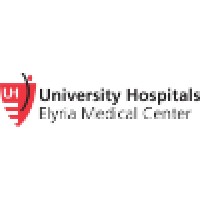
University Hospitals Elyria Medical Center
Founded in 1908, University Hospitals Elyria Medical Center is a 387-licensed bed hospital with additional campuses in Amherst (University Hospitals Amherst Health Center), Avon (University Hospitals Avon Health Center) and Sheffield (University Hospitals Sheffield Health Center), along with medical offices in Grafton, North Ridgeville and Westlake. A state-of-the-art fitness center, along with physician offices, rehabilitation, outpatient testing and a full-service 24/7 ER are located within the UH Avon Health Center. The Center for Health & Fitness is one of Northeast Ohio’s first medically-based fitness centers, and offers more than 115 weekly group exercise classes, senior programs, a day spa, and more. The UH Amherst Health Center features a full-service 24/7 ER to serve the emergency needs of the community. Also on-site is a dedicated radiology department for 24-hour X-ray, CAT scan and Ultrasound; as well as an around-the-clock laboratory.






